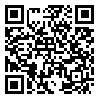BibTeX | RIS | EndNote | Medlars | ProCite | Reference Manager | RefWorks
Send citation to:
URL: http://rehabilitationj.uswr.ac.ir/article-1-543-en.html

 , Seyyed Abbas Bagheri-Yazdi
, Seyyed Abbas Bagheri-Yazdi 
 , Behrouz Jalili
, Behrouz Jalili 
 , Katayoun Khoushabi
, Katayoun Khoushabi 
 , Davoud Shah-Mohammadi
, Davoud Shah-Mohammadi 
 , Farbod Iman-Zadeh
, Farbod Iman-Zadeh 
 , Hassan Karami
, Hassan Karami 

Objective: Child-abuse (physical, mental and sexual) is considered as one of the important problems faced by persons specialized in behavioral Sciences and Forensic Medicine, physicians and pediatricians. This cross-sectional study was conducted to determine the status of physical child-abuse in Tehran.
Materials & Methods: Forty-five pediatric residents, trained for this purpose, conducted this ten-day study in three teaching hospitals (Children's Medical Center, Bahrami Hospital, Hazrat Ali-Asghar Hospital). A questionnaire on physical child-abuse, designed and proposed by the WHO, was completed for 3019 children (male=1578, 52.3% female=1441, 47.7%) less than 18 years of age, who attended the emergency department of the above hospitals. The children and their parents were interviewed and physical examination was performed for the children.
Results: A total of 347 children (male=14.5%, female =9.6%), which is 12.2% of the total number of children studied, were physically abused. Injuries were mostly present on the face, upper extremities, back and lower extremities, among which 12.8% of the cases were severe and 87.2% were moderate in intensity. Fathers and mothers were responsible for 51.2% and 34.1% of the cases of child-abuse respectively. Among the persons responsible for causing child-abuse, 34.1% had themselves been physically abused during their childhood period and 26.4% had physically abused children before. Hyperactivity, bed-wetting and an unwanted child were among the most common causes of child-abuse.
Conclusion: Factors precipitating child-abuse included: large numbers of children in the family drug addiction of one of the family members, and acute or severe psychological stress during the past 6 months. Using the Chi-square test, a significant relationship (P value=0.00l) was found to exist between physical child-abuse and demographic factors such as age, sex, site of residence, history of divorce or separation of the parents and history of physical abuse in the parents' childhood days.
Received: 9/08/2010 | Accepted: 15/10/2015 | Published: 15/10/2015
| Rights and permissions | |
 |
This work is licensed under a Creative Commons Attribution-NonCommercial 4.0 International License. |



